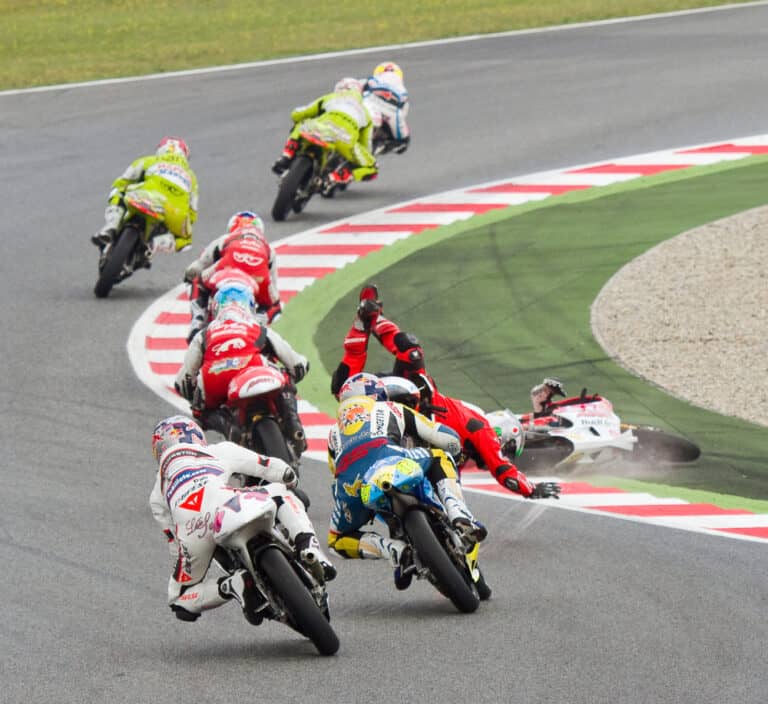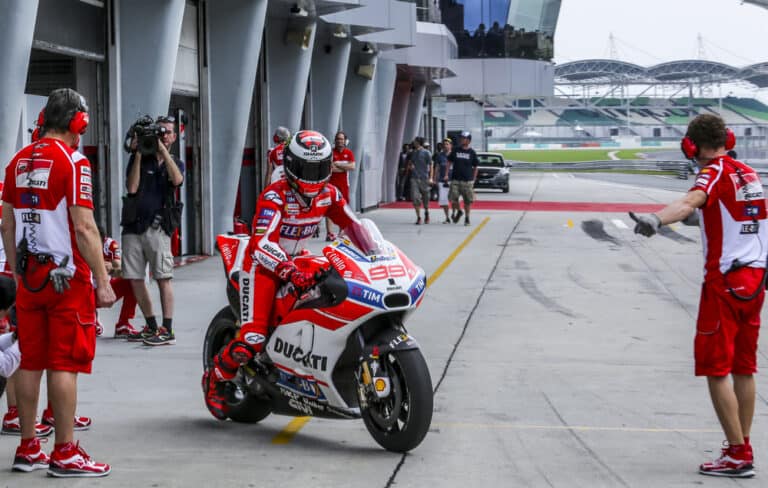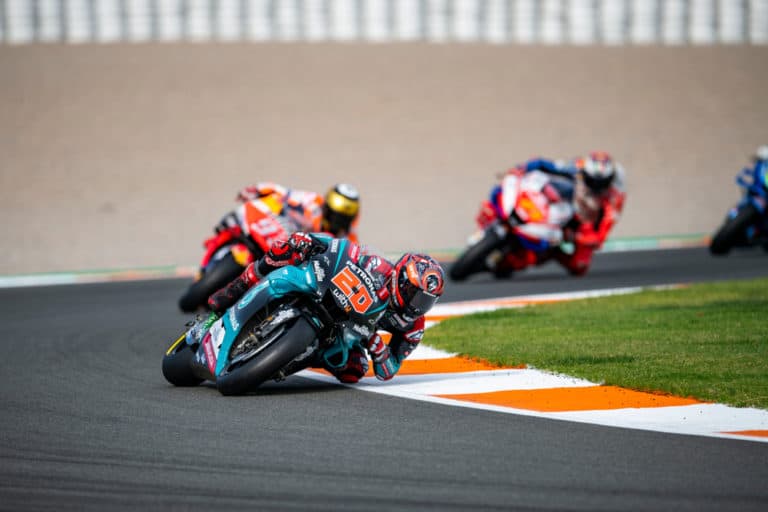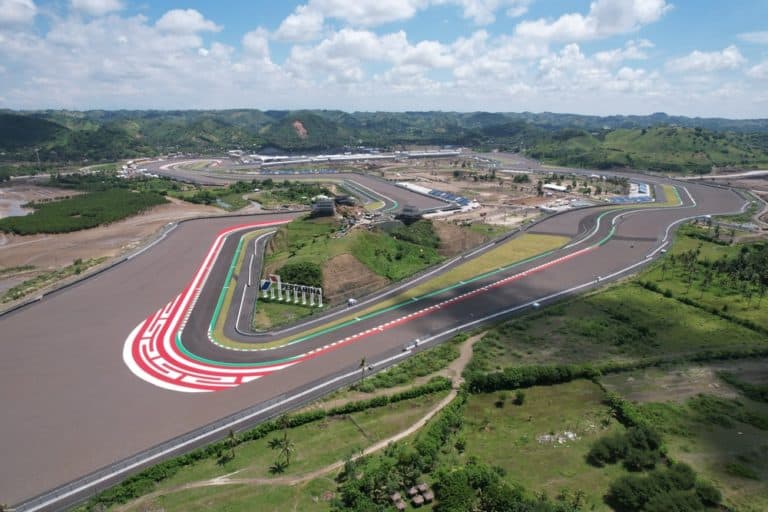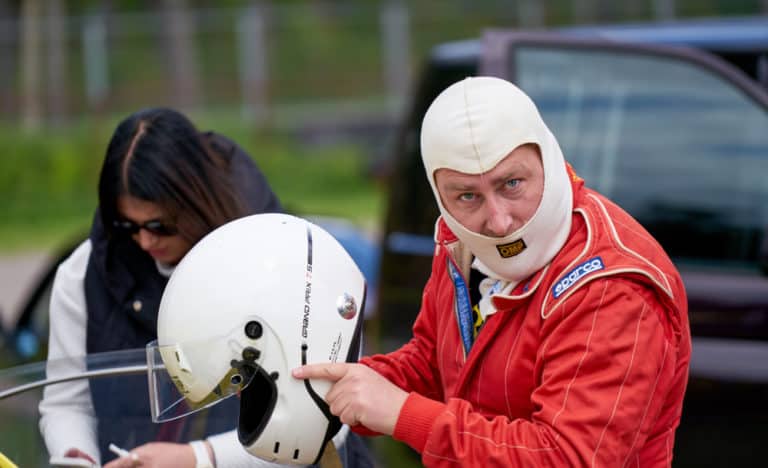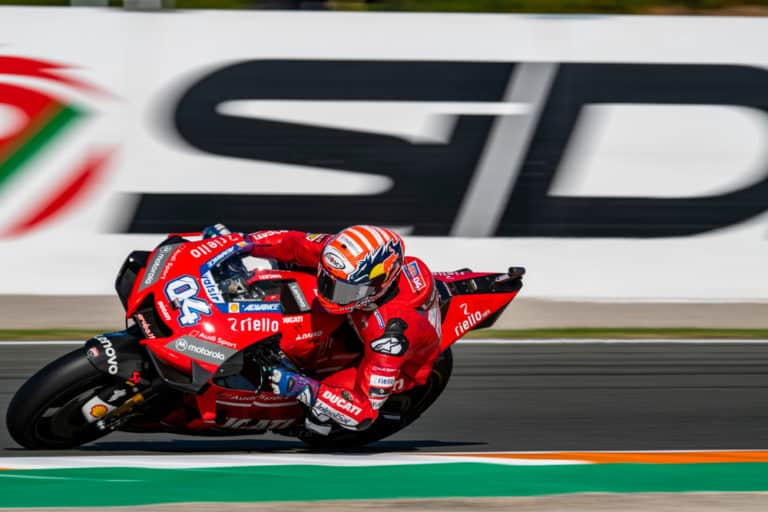Moto GP is the motorcycle equivalent of Formula 1 and is the oldest world championship series in motor racing, having been inaugurated in 1949. The bikes are manufactured specifically for the series under strict regulations and are not available in road trim to the general public.
Moto GP engines are designed to last for four races or around 2000 kilometers (1243 miles). The sophisticated engineering that goes into the production of a Moto GP engine is targeted at producing speed above all else, and every component is designed around this goal.
There is a multitude of factors to consider when looking at the longevity of a Moto GP engine. The distance of 1243 miles seems to be exceptionally low, but in fact, the reliability of each engine is the key to a team’s success, and the management of its use is a science in itself.
The History Of Moto GP Engines
While Grand Prix motorbike racing is now in its eighth decade, Moto GP as a brand was launched only in 2002, so it is the last twenty years that we will be looking at.
With the official birth of Moto GP, new regulations and new technology saw some dramatic changes to the engines. Up to 2002, the premier class allowed 2- or 4-stroke 500 cc engines, but in 2003, capacity was increased to 990 cc, and all engines were designed as 4-strokes.
In 2007 regulations changed again, and engine capacity was reduced to 800cc. This was the case until 2012, when changes were introduced, increasing engine size once again to 1000cc.
There are no regulations defining the number of cylinders or the configuration of the engine, so currently, one sees both V4 and straight-line four-cylinder engines being used as these appear to offer the best power-to-weight ratios and the best combination of speed and reliability.
Regulating The Use Of Moto GP Engines
There are six manufacturers providing engines in the current Moto GP season – Yamaha, Honda, Aprilia, KTM, Suzuki, and Ducati. Each manufacturer is allowed seven engines during a season, so their use has to be carefully monitored.
- At the start of the season, each manufacturer must choose exact specifications for its engine and supply samples of each component part. These samples can be used throughout the season to ensure that no changes or upgrades have been made.
- Marshalls in every garage ensure that engines are sealed, and these seals are numbered. At any time, it is possible to see which engines are being used and what distance they have covered.
- Concessions are granted to manufacturers who are performing poorly. These concessions allow the use of nine engines instead of seven and don’t require the manufacturer to provide samples as upgrades are permitted during the season.
- Satellite teams are linked to the leading manufacturers but don’t have access to all the finance and technology. They are not subject to all the same limitations, can run two bikes with different specifications, and can upgrade during a season. They are nevertheless forced to limit the number of engines to seven, so making them last is just as big a task.
Factors Affecting How Long Moto GP Engines Last
Making sure that the engines last is not just a question of quality parts and precision engineering. The strategy employed in rotating the use of available engines also requires the analysis of engine performance, track conditions, and other data before the bike is put out on the track.
- What distance must an engine cover – it’s not just the race distance that must be considered. Over a race weekend, the bike is run for about 375 miles per day, including practices and qualifying. Over a season of twenty-one races that totals 21 x 375 = 7875 miles. If all seven engines are used, each one must last 7875/7 = 1125 miles.
- When does an engine peak – a newly-built Moto GP engine needs to be run for about 155 miles before it reaches its peak performance levels, after which it slowly deteriorates. The significance of this fact is that a team may use an older engine in FP1 and FP2 (practice sessions) and then switch to a “run-in” engine for qualifying and race day.
- Track conditions and track design also determine how long an engine will last. On certain circuits with long straights, a Moto GP engine will spend longer at full throttle, revving up to 18500 rpm, with maximum load on all components. On tracks with more tight corners and shorter flat-out sections, engines will be running at less than full throttle and will last longer.
Philip Island in Australia and Silverstone in England are two of the fastest tracks on the Moto GP calendar, with the former having a peak speed of 216 miles per hour.
- Tuning of the motor – while no components may be upgraded, changes in gearing and timing will result in changes in horsepower or RPM. These adjustments may be made to increase performance at the expense of reliability, or they may reduce performance if there are potential problems in keeping the engine going during a race.
- Maintenance – with only seven engines available during the season, maintaining them is a crucial part of any team’s program. Constant monitoring of components, and controlling aspects such as temperature and timing, will help a team make it through the race calendar without running out of engines.
Why Moto GP Engines Don’t Last As Long As Road Bike Engines
While Superbikes, for example, use the same engines as are fitted to road bikes and are available to the public, Moto GP bikes use prototype engines manufactured specifically for the racing calendar.
- While a 1000cc street bike is powered by an engine of approximately 200hp, Moto GP engines, while the figures are not made public, push out between 280 and 300 hp.
- Pneumatic valves, rather than spring-activated valves, lightweight materials, and custom-made components specifically for the individual rider make a Moto GP engine more efficient for the task but a lot more expensive.
- The engine is designed for racing, revving up to 18500 RPM, compared to a 1000cc road bike with a rev limit of around 14-15000 RPM. The additional power creates stress and wear, and the motor is reliable only for as long as it’s designed to deliver that level of performance.
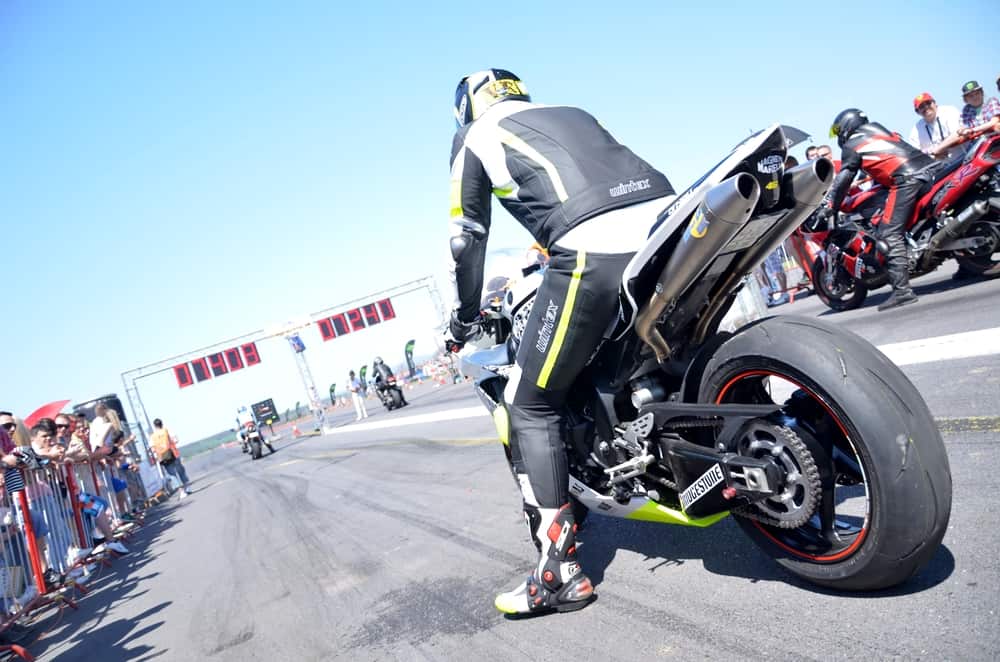
Conclusion
Moto GP is a multi-billion-dollar industry, and the major manufacturers use the racing calendar to market and promote their brand. Riders who win the World Championship become cult figures and earn massive multi-million dollar incomes.
Because of this, winning races becomes the ultimate goal for riders and manufacturers, and the reliability of the bikes, specifically their engines, is the single most important factor. While they may seem fragile and prone to failure, the Moto GP engine is, in fact, an engineering masterpiece.

